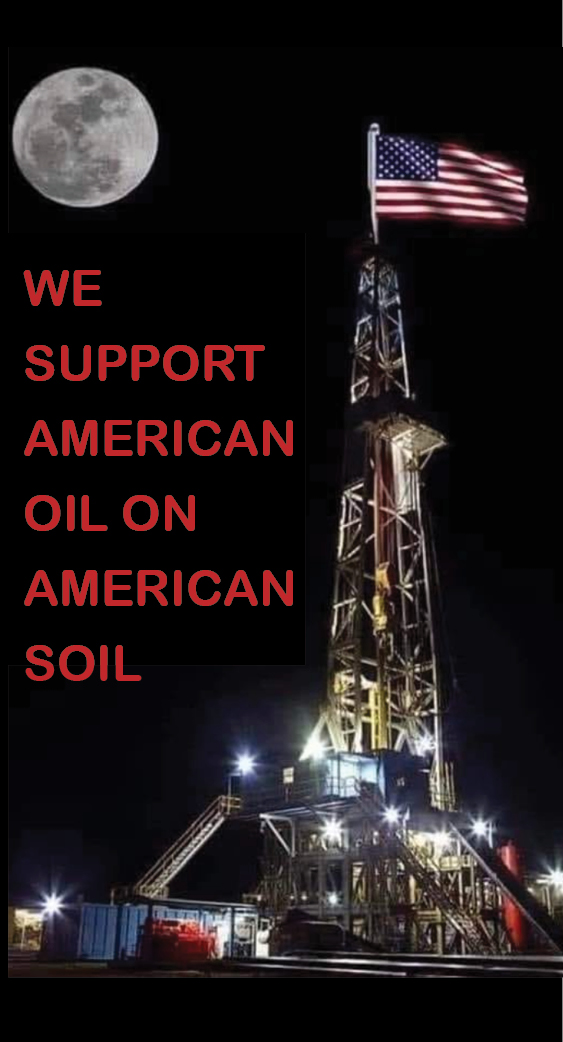Arch Resources, Campbell County Look to Repurpose Portions of Coal Facilities, Wyoming
A seemingly trivial zoning change unceremoniously approved by Campbell County commissioners this month could open the door to a new economic development strategy and help backfill future job and revenue losses in the coal industry here.
With few people in attendance, the commission unanimously approved a request to “rezone” roughly 12 percent of the 11,500-acre Coal Creek coal mine from unzoned to “heavy industrial.”
The simple “I-2” heavy industrial designation may appear as merely an acknowledgement, given the mine’s 40-plus years of earth-moving activity with massive draglines, house-sized coal-hauling trucks, constant rail traffic and earth-rumbling blasts — all required to ship millions of tons of coal annually to coal-burning power plants across the country.
But with the zoning change, the mine’s operator may now seek approval from state and federal regulators to remove a 1,447-acre portion of the mine, which sits east of Highway 59 between Gillette and Wright, from its reclamation obligations.
Powder River Basin coal giant Arch Resources is preparing to close the mine, though it has not yet set a date. Rather than raze all the mine’s infrastructure, the company is considering taking on tenants who might eventually take ownership of several offices, shops, rail spurs, loadout facilities, water wells, and sewer systems to make use of it long after commercial coal production at the mine comes to an end.
“The idea is that we want to save that infrastructure and use it for other things,” said Rusty Bell, a former Campbell County commissioner who now serves as director of the Campbell County-based Office of Economic Transformation at Gillette College.
Though local leaders are not yet naming names, several industrial companies are interested in “repurposing” the Coal Creek facilities, as well as similar infrastructure at several other coal mines in northeast Wyoming, according to Bell and other economic development officials. The businesses include manufacturing, coal-to-products processing, and renewable energy development.
“We don’t want [the infrastructure] to be reclaimed. And this mine, whether we like to hear this or not, this mine is getting to the end of its reserves,” Bell said.
MINE INFRASTRUCTURE REUSE
Though Bell and other local officials desperately want operators to continue scooping and shipping coal for as long as possible, they also recognize that market forecasts predict mine closures are inevitable. In fact, coal giant Arch — owing the bulk of its coal production to the Powder River Basin — has assured its investors and the public for the past several years that it will close both its Coal Creek and Black Thunder mines here.
There’s much at stake for Campbell County.
The region is home to a dozen mines that together account for about 40 percent of the nation’s coal supply. The industry, aside from bankrolling a huge portion of local and state government coffers, is responsible for transforming this agriculture and oilfield boomtown into a rare rural gem of self-sufficiency over the past 50 years. Yet residents here live with the knowledge that climate policies and market forces will continue to drastically shrink the industry.
One of the simplest ways to respond to the downturn, Bell said, is for Campbell County to rely on its best assets: an existing workforce with industrial know-how and massive amounts of industrial infrastructure.
“We would love for [mines] to continue to produce every ton of coal they have permitted,” Bell said. Meantime, “we’re looking for other businesses — whether it’s using coal or not using coal, we’re going to take whatever industry that wants to come.”
Though no local, state, or federal dollars currently back mine reuse efforts here, companies that set up shop at a coal mine may apply for public dollars, Bell noted.
Bell and other economic development officials recently joined forces with The Nature Conservancy of Wyoming to take inventory of mining and coal-power plant facilities throughout the state that may eventually be retired by current owners but that might also attract new businesses. The 313-page “Coal Infrastructure Reuse” report published in 2023 analyzed more than 30 major coal mine and coal-power sites in the state that collectively span some 8,800 acres and represent $980 million in infrastructure replacement costs.
“There’s big [electrical] power supplies at all of these mine sites, there’s high-volume water wells, there’s natural gas pipelines, offices, and enormous shops,” said Jim Ford, a lead author of the study, Campbell County Commissioner and general manager for the Ft. Union Industrial Park, which occupies a former Powder River Basin coal mine site north of Gillette.
“The first and best use for a coal mine is to mine coal. But we know that that’s changing, and it would be silly not to look for ways to retain value in that infrastructure post-mining,” added Ford.
That infrastructure — and the existing workforce that powers it — represents a rare, ready-for-use opportunity for companies looking to set up manufacturing or install renewable energy generation or coal-to-products businesses, according to the report. The report also underscores that such reuse has the added benefit of sparing undeveloped landscapes that are home to vital wildlife habitat, cultural and recreational resources.
“It looks at where there’s opportunity to keep people employed, keep generating revenue and utilize these assets to bring in new economic investment while protecting landscapes elsewhere,” The Nature Conservancy’s Energy Programs Manager Justin Loyka told WyoFile in April.
RECLAMATION
The Coal Creek Mine, which is about a half-hour drive south from Gillette and a half-hour drive north from Wright, began operations in the early 1980s. It’s among the smallest coal mines by production in the region. It typically ships about 2 million tons annually, and it employed 81 workers in 2022, according to the federal Mine Safety and Health Administration.
Though Arch, which acquired Coal Creek and the Black Thunder mines in the 1990s, has stated it will close both mines as it shifts focus to its eastern coal operations, company officials have said they will continue to produce coal at the mines for as long as the market allows. Meantime, the company, which did not respond to WyoFile’s inquiries, is preparing its Powder River Basin mines for permanent closure and taking steps to reclaim the operations.
Typically, under federal surface mining laws, Arch would be required to backfill coal pits, recontour and reseed the landscape to “pre-mining” conditions and uses. That includes demolishing, disassembling, and otherwise disposing of buildings, rail lines, and other facilities. But with the county’s rezoning in accordance with its land use plan, the federal Office of Surface Mining Reclamation and Enforcement may allow Arch to withdraw those facilities from its reclamation obligations, according to Bell and other county officials.
However, Arch would still be required to reclaim the rest of the mining lands.
As long as that happens, and it’s paid for by the mining operators, the mine infrastructure reuse effort has tentative support from the most prominent coal industry watchdog in the region — the Sheridan-based landowner advocacy group Powder River Basin Resource Council. The group was formed in the 1970s in response to the proliferation of surface coal mining here and helped craft the federal laws that guide surface mine reclamation.
Though the organization would prefer renewable energy over other kinds of energy projects at former mine sites.
“We’re curious and we’re interested,” said Powder River Basin Resource Council attorney Shannon Anderson.
“I think there’s just a reality that you can’t actually restore the land to previous conditions when you’ve had rail laid down for 40 years or a road for 40 years or whatever it is. So to some extent, you know, restoring [industrial infrastructure] to sagebrush pasture is going to be impossible,” added Anderson.
By: Dustin Bleizeffer, WyoFile





















